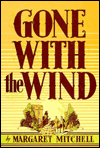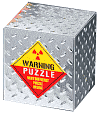William Gibson
 Gibson's early writings are generally futuristic stories about the influences of cybernetics and cyberspace (computer-simulated reality) technology on the human race. His themes of hi-tech shantytowns, recorded or broadcast stimulus (later to be developed into the "sim-stim" package featured so heavily in Neuromancer), and dystopic intermingling of technology and humanity, are already evident in his first published short story, "Fragments of a Hologram Rose" (1977). The latter thematic obsession was described by Gibson's friend and fellow author, Bruce Sterling, in the introduction to Gibson's short story collection Burning Chrome, as "Gibson's classic one-two combination of lowlife and high tech."
Gibson's early writings are generally futuristic stories about the influences of cybernetics and cyberspace (computer-simulated reality) technology on the human race. His themes of hi-tech shantytowns, recorded or broadcast stimulus (later to be developed into the "sim-stim" package featured so heavily in Neuromancer), and dystopic intermingling of technology and humanity, are already evident in his first published short story, "Fragments of a Hologram Rose" (1977). The latter thematic obsession was described by Gibson's friend and fellow author, Bruce Sterling, in the introduction to Gibson's short story collection Burning Chrome, as "Gibson's classic one-two combination of lowlife and high tech."In the 1980s, his fiction developed a film noir, bleak feel; short stories appearing in Omni began to develop the themes he eventually expanded into his first novel, Neuromancer. Neuromancer was the first novel to win all three major science fiction awards: the Nebula, the Hugo, and Philip K. Dick Award.
"I'd buy him a drink, but I don't know if I'd loan him any money." — Gibson commenting in 1999 on the author of Neuromancer
The subsequent novels which complete his first trilogy - commonly known as "the Sprawl trilogy" - are Count Zero (1986) and Mona Lisa Overdrive (1988).
Following the completion of the Sprawl trilogy, Gibson's next project was a departure from his cyberpunk roots; a steampunk collaboration with Bruce Sterling. The Difference Engine, an alternate history novel set in a technologically advanced Victorian era Britain was nominated for the Nebula Award for Best Novel in 1991 and the John W. Campbell Memorial Award in 1992. Gibson's second trilogy, "the Bridge trilogy" composed of Virtual Light (1993), Idoru (1996), and All Tomorrow's Parties (1999), centres on San Francisco in the near future and evinces Gibson's recurring themes of technological, physical, and spiritual transcendence in a more grounded, matter-of-fact style than his first trilogy. A common theme up to this point has been the use of characters with seemingly innate abilities in the technological world they inhabit.
After All Tomorrow's Parties, Gibson began to adopt a more realistic style of writing, with continuous narratives. His novel Pattern Recognition, set in the present day, broke into mainstream bestseller lists for the first time.
Gibson finished writing a new novel entitled Spook Country in October 2006 and it was released in the US on August 7, 2007. Gibson says: "It's set 'in the same universe,' as they say, as Pattern Recognition. Which is more or less the one we live in now. It takes place during the spring of 2006." Spook Country was released in hardback in the UK on August 2, 2007 and features some of the same characters as Pattern Recognition, including Hubertus Bigend and Pamela Mainwaring - employees of the enigmatic marketing company Blue Ant.
Download Books :
http://rapidshare.com/files/45691726/Gibson__William.zip
File Size : 2.0 MB

.jpg)

















































































































































































































































































































































































































































































































